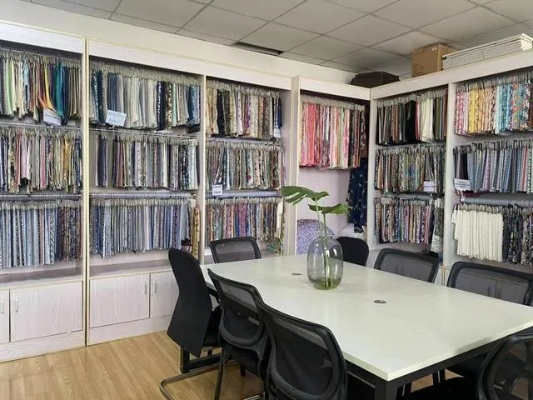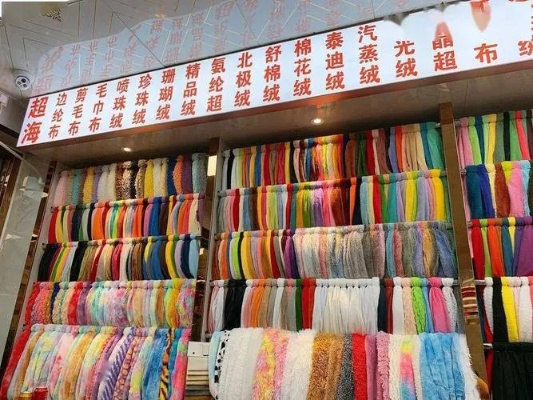The Difference between Fibers and Textiles
The distinction between fibers and textiles is fundamental to understanding the structure and function of both. Fibers are the basic units of materials used in fabrics, such as cotton or wool. They consist of long, continuous strands that can be spun into yarn, which is then woven into fabric. On the other hand, textiles refer to the finished products made from these fibers, including clothing, carpets, and even paper. While fibers are technically a type of material, textiles are not; they are a product of manufacturing processes based on fibers. The difference lies in their composition and application; while fibers are pure substances, textiles are composites made up of multiple layers of fibers and other materials.

I. Introduction
Textiles are a crucial part of our daily lives, providing warmth, comfort, style, and functionality. They come in various forms, from clothes to carpets, but the backbone of textiles is made up of fibers. In this talk, we will delve into the differences between fibers and textiles, exploring the properties that make each uniquely valuable for creating clothing, home furnishings, and more.
II. What is Fiber?
Fibers are the basic building blocks of textiles. They are long, continuous strands that are either natural or synthetic in origin. Natural fibers include cotton, wool, flax, silk, hemp, and jute while synthetic fibers include polyester, nylon, and acrylic. Each type possesses specific properties that make them ideal for particular uses.
III. Types of Fibers
-
Natural Fibers:
- Cotton: A soft, breathable material derived from the fibers of the Gossypium plant. It's popular for its comfort and breathability.
- Wool: Derived from the hair of sheep, it's warm and durable but not as breathable as cotton.
- Flax: A strong and sustainable fiber produced by the seeds of the flax plant. It's known for its eco-friendliness and high strength.
- Silk: Made from the cocoons of silkmoths, it's a luxurious and smooth material with excellent moisture-wicking properties.
- Hemp: An excellent source of biodegradable fibers used for a wide range of products due to its durability.
- Jute: A sturdy fiber derived from the leaves of the plant, making it useful for producing durable and breathable fabrics.
-
Synthetic Fibers:
- Polyester: A highly processable and durable fiber derived from petroleum, making it popular for garments and home goods.
- Nylon: A lightweight, strong, and elastic fiber used for outdoor wear and athletic gear.
- Acrylic: Durable and resistant to water and chemicals, often used in industrial applications like carpets and upholstery.
- Polypropylene (PP): A strong and durable fiber commonly used in outdoor apparel and sportswear.
- Acetal: A semi-transparent, clear, and flexible material that is commonly used in automotive parts and electronic components.
IV. The Role of Fibers in Textile Production
The choice of fiber plays a crucial role in determining the texture, durability, and functionality of textiles. For instance:
- Cotton: Due to its breathability, cotton is an optimal choice for summer clothing, especially T-shirts and dresses.
- Silk: Offering exceptional softness and lustrous qualities, silk is favored for evening gowns, formal wear, and other luxury items.
- Polyester: Its strength and durability make polyester popular in everyday wear and outdoor apparel, like jackets and jeans.
- Wool: Known for its warmth and comfort, wool is frequently found in winter clothing such as sweaters, coats, and bedding.
V. The Difference Between Textiles and Their Fibers
While the term "textile" encompasses any fabric made from fibers or filaments, there are several key distinctions between textiles and their constituent fibers:
-
Durability vs. Comfort:
- Textile materials like wool, linen, and denim are durable but may not offer the same level of comfort as synthetic fibers like polyester or nylon.
- On the contrary, synthetic fibers like rayon or spandex are softer and comfortable but less durable over time.
-
Moisture Resistance:
- Natural fibers like cotton and linen absorb and hold moisture well, making them suitable for use in clothing designed to wick sweat and air.
- Synthetic fibers like polyester or nylon are less absorbent but retain their shape when wet, offering better durability in humid conditions.
-
Environmental Impact:
- Natural fibers, such as cotton or wool, are generally considered more environmentally friendly because they can be grown without the need for pesticides or synthetic fertilizers.
- However, the production of synthetic fibers like polyester does not require the same environmental considerations, contributing to the deforestation of forests for the production of these materials.
-
Ease of Care:
- Some textiles, such as wool or silk, are easier to maintain than synthetic ones. For example, wool requires regular washing to remove dirt and dust but can be hand washed at home without damaging it.
- Synthetic fabrics like polyester or nylon can be cleaned with just a machine wash, making them more convenient to care for.
VI. Examples of Textile Products Using Different Fibers
To illustrate these points further, consider the following examples:
- Cotton Shirts vs. Denim Jeans: Cotton shirts offer comfort and breathability, making them ideal for warmer months, while jeans made from denim provide durability and a rugged look for those who prefer a more rugged look.
- Silk Dresses vs. Polyester Sweaters: Silk dresses are elegant and soft to the touch but require special care to keep their shape and prevent damage from exposure to heat or sunlight. Polyester sweaters are practical, durable, and easy to maintain, making them a great choice for everyday wear.
- Rayon Skirts vs. Nylon Pants: Rayon skirts are lightweight, breathable, and soft, perfect for daytime wear or casual occasions. Meanwhile, nylon pants offer durability and resistance to water and chemicals, making them an ideal choice for work environments or outdoor activities.
In conclusion, understanding the differences between fibers and textiles allows consumers to make informed decisions about what suits their personal needs and lifestyle preferences. By appreciating the properties of different types of fibers, we can create textiles that are both functional and stylish, catering to the demands of modern life.

在日常生活中,我们经常接触到各种纤维和纺织品,它们各自具有独特的特性和用途,本文将通过对比纤维和纺织品的区别,帮助大家更好地了解这两种材料。
纤维与纺织品的区别
定义与分类
纤维:纤维是一种天然或人工合成的材料,用于制作各种纺织品,根据不同的分类标准,纤维可以分为很多种类,如天然纤维、合成纤维等,天然纤维包括棉花、羊毛、丝绸等,而合成纤维则包括聚酯纤维、尼龙等。
纺织品:纺织品是利用纤维材料制作的各种产品,包括服装、家居用品、装饰品等。
纤维的特性
(1)物理特性:纤维的物理特性主要包括强度、弹性、耐磨性等,不同的纤维具有不同的物理特性,适用于不同的产品用途,羊毛具有柔软、保暖的特性,适合制作毛衣、毛毯等;而合成纤维则具有较高的强度和耐磨性,适合制作衣物、窗帘等。
(2)化学特性:纤维的化学特性主要取决于其成分和制造过程,不同的纤维具有不同的吸湿性、透气性、染色性等特性,某些纤维具有良好的吸湿性,可以保持衣物干爽;某些纤维具有较高的染色性,可以制作出各种颜色和图案的纺织品。
纺织品的种类与用途
(1)面料种类:纺织品的面料种类繁多,包括纯棉面料、涤纶面料、丝绸面料等,每种面料都有其特定的用途,如纯棉面料适合制作内衣、T恤等;丝绸面料则适合制作高档服装、装饰品等。
(2)应用领域:纺织品的用途非常广泛,涉及到服装、家居用品、装饰品等多个领域,服装行业使用各种纤维和纺织品制作成各种款式和颜色的衣物;家居用品行业则使用纺织品制作各种床上用品、窗帘等。
案例说明
以纺织品为例,展示纤维与纺织品的区别及应用场景。
纯棉面料的应用场景
纯棉面料是一种天然纤维面料,具有柔软、透气、吸湿性好等特点,适合制作各种衣物和家居用品,在服装行业中,纯棉面料被广泛应用于T恤、衬衫、裤子等衣物;在床上用品行业中,纯棉面料则被用于制作床单、被罩等家居用品,纯棉面料还具有环保、可降解等特点,符合现代人们对环保产品的需求。
合成纤维的应用场景
合成纤维是一种人工合成材料,具有强度高、耐磨性好等特点,适合制作各种衣物和装饰品,在服装行业中,合成纤维被广泛应用于外套、裤子、衬衫等衣物;在窗帘、地毯等装饰品行业中,合成纤维则被用于制作各种图案和颜色的装饰品,随着科技的发展,合成纤维制品也越来越多地应用于医疗、航空航天等领域。
我们可以看出纤维和纺织品在定义与分类、物理特性、化学特性等方面存在明显的区别,它们在应用领域上也各具特色,在日常生活和工作中,我们应根据具体需求选择合适的纤维和纺织品,以达到更好的使用效果和舒适度。
Articles related to the knowledge points of this article:
Exploring the World of Textiles:The Story and Innovations at Kanazawa Textile
Trends in Textile Development in the Tang Dynasty
Top 10 Textile Companies Going Public in the Global Market



